
For startups and small operations, virtual assistants can be vital.
The general idea is: instead of hiring a full-time specialist or wasting time on data entry, you hire a VA.
It sounds easy. You just hire a VA, right?!
But what happens after that is the hard part. Straight after hiring comes the onboarding and training. That’s the part where you get your new VA up to speed with how your company works, and how the tasks, rules, and responsibilities are going to be different from the other companies they’ve worked for.
You’ll need to explain how to use your stack of tools, and how they can work as efficiently as possible. It’s also a process for you: you need to remember to check in, make sure everything’s set up properly, and review their performance.
In this post, I’m going to go over some of the key things to keep in mind when onboarding a virtual assistant, and share two of our internal processes with you.
What you need to do straight after hiring
It’s likely that you’ve hired a virtual assistant with a general job description, making references to a necessary level of computer literacy, and making sure past experience fits the role.
What you probably haven’t done is tell the new assistant exactly what they’re doing, or how to do it.
In this part of the process, I’m going to go through the technical steps you need to take, as well as the general and task specific-training you should provide.
Step one: create a company email address for the new VA
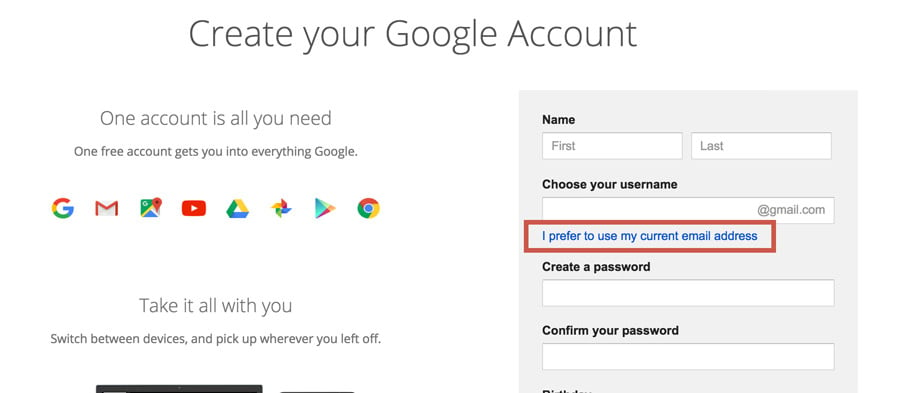
The best way to control permissions within an organization is to have a company email address for every employee. For example, mine is [email protected] — my access and permissions for all of the services and products I’ve signed up to with that address are controlled by Process Street, making it easier to control my usage of apps like Slack and Trello.
When it comes to the offboarding process, the easiest way to clean the employee’s accounts and access is simply to disable the email address, so protect yourself now by controlling logins with a company email, not a personal one.
Step two: add the VA to all the products and services you need them to use
Whether you use Slack, Trello, Asana, or Basecamp for communication, the VA needs to have the right access to all of them.
Send them login details of the created accounts and make sure you’ve got the permissions right. There’s nothing worse than a wasted day at work because someone didn’t have access to the place they needed (especially when you work in different time zones and can’t fix the issue straight away).
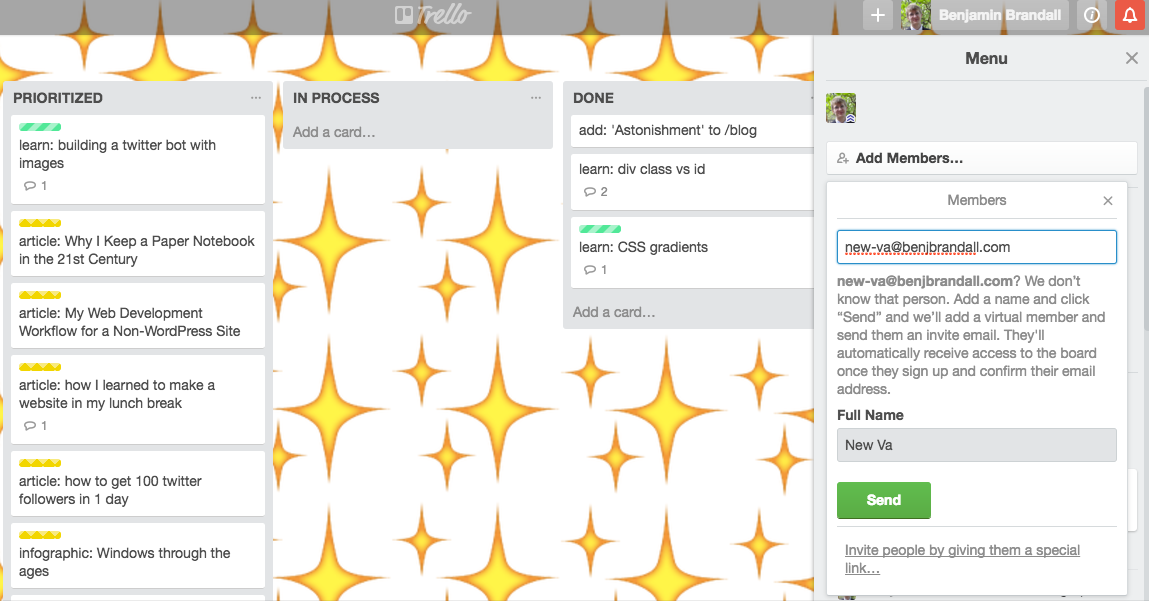
Don’t overlook giving them access to things like Google Sheets and Docs documents. Or, better yet, set it up so employees with an email address from your domain has the right permissions.
Step three: explain the steps for their training task
Whatever it is you hired a VA for, whether it’s for writing comments or finding emails, you need to make sure they can autonomously work on the task and that you can delegate (or do yourself) batch approvals.
First of all, send over a description of the task you need completing. For example, this could be something as simple as “working through this spreadsheet containing names and companies, find me the email addresses of each contact”.
For that to work, you need to fully explain the task. The best way to explain a task is by creating a process in Process Street. That way, you can write the method down once, send it to everyone that needs to do it, and track their progress from one dashboard.
It’s unscalable and short-sighted to just fire off a few emails or Slack messages, because you’re going to find yourself repeating those instructions over and over again as the company grows.
Here’s an example process for finding emails:
(Check here for a bunch more example processes for marketing teams.)
Often, the help teams behind the tools the VAs will be using will have done the best job at explaining how to use them. For example, Airtable has a wealth of information on their platform available, meaning you don’t have to re-explain what they’ve already taken time to outline.
In our checklist, we have one task which consists entirely of embedded tutorial videos; one from each of the common tools we use.
Scroll down for more information on training.
Step four: provide material on general productivity/efficiency
From day one, Vinay (our CEO) will start work training us to be as efficient as possible. Not just with Process Street-related tasks, but with everything. We already have a lot of material on our blog for this, and as well as marketing material it doubles as training material for virtual assistants.
For example:
- Task Management Techniques: 7 Lists To Get Shit Done On Time
- How to Write More in Less Time
- Get More Done: The Complete Introduction to Task Management
- How to Improve Productivity by 375%
- How to Stop Procrastinating and Get $#*! Done
Part of my training work as a writer was to create some of these guides, automatically learning about key productivity techniques in the process!
Step five: outline company policy
Process Street isn’t a particularly draconian company. We don’t have thousands of rules and regulations for everything under the sun, just 9 solid rules that are mostly common sense (transparency and accountability-oriented):
- Each employee should notify the group when they start the working day
- Inform the group when starting/ending a break
- Keep communication fluent during the working hours
- Keep group updated on what task the employee is currently working on
- At the end of the working day inform of what has been done during the day, report to manager(s) on Slack
- Always fill the daily checklist
- Unless it is a matter of urgency, always notify 3-4 days in advance if the employee needs time off (apart from national holidays which they can have off work)
- If time is taken off during the week without notice and reason it must be done over the weekend
- Always keep work communication in public channels
The ninth rule is especially important, because managers need to be kept in the loop with work activity at all times, and need to be sure they can resolve disputes by seeing all of the information. Tools like Slack are a blessing, but when employees communicate work in direct messages, it can reduce the transparency of the organization. The ninth rule isn’t just pedantry; it’s a way to automatically update everyone at once, save on typing the same information twice, and to make employees feel responsible for their work to the whole group.
How to implement processes for your new VA
Processes protect you and your employees from the laborious time-wasting task of repeatedly explaining yourself. They should include screenshots, screencasts, videos, step-by-step guides, additional resources, or anything else you need to ensure you’ve 100% explained the task.
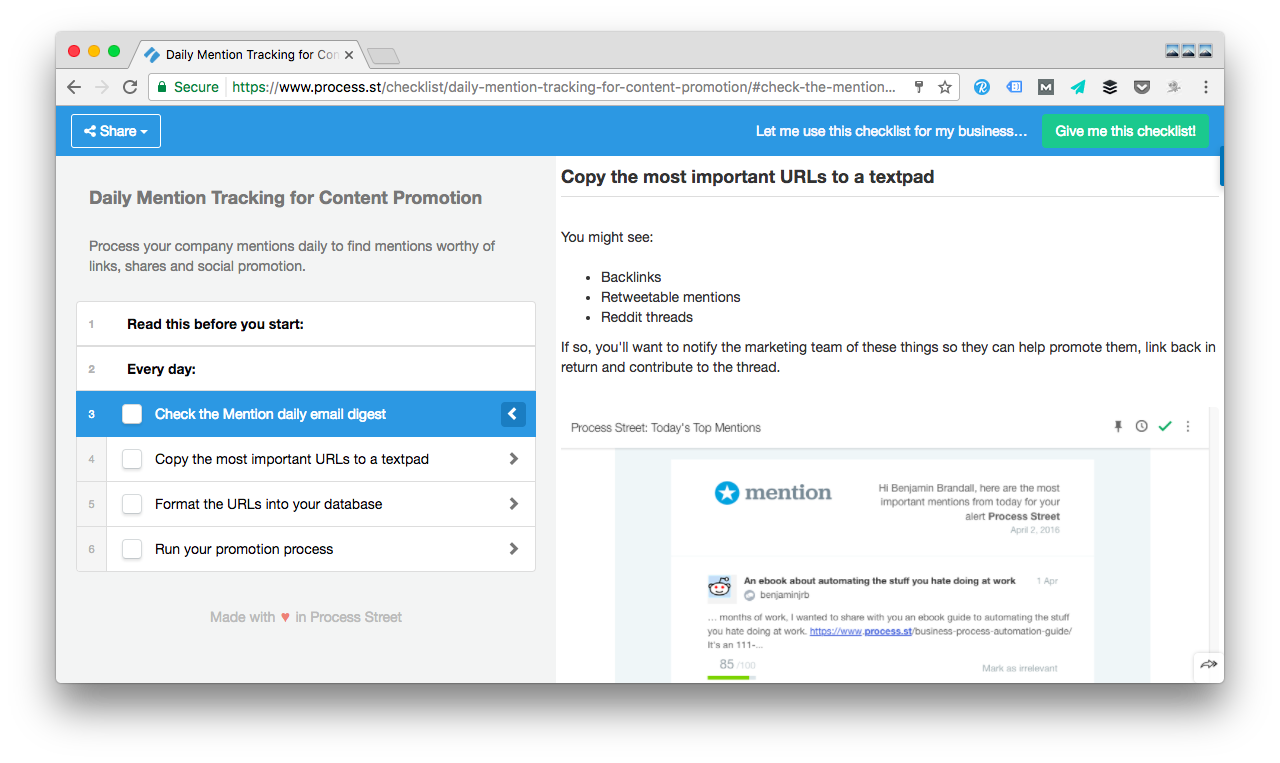
You can use Process Street — a free process platform — to systemize your business, and easily instruct/onboard every new hire.
Do the task yourself, and record a screencast
A screencast is a rich and detailed way to communicate with new employees, and is a good solution for instructing remote, virtual employees.
You can use Quicktime, which is a native Mac app, or OBS Studio on Windows to create high-resolution screen recordings with audio of your voice.
When you’re recording the task, slow down and realize that you’re talking to someone who doesn’t know every click and keystroke.
We created a video on our exact process here:
When you’re creating a process in Process Street, you can embed the screencast video as a task, like this:
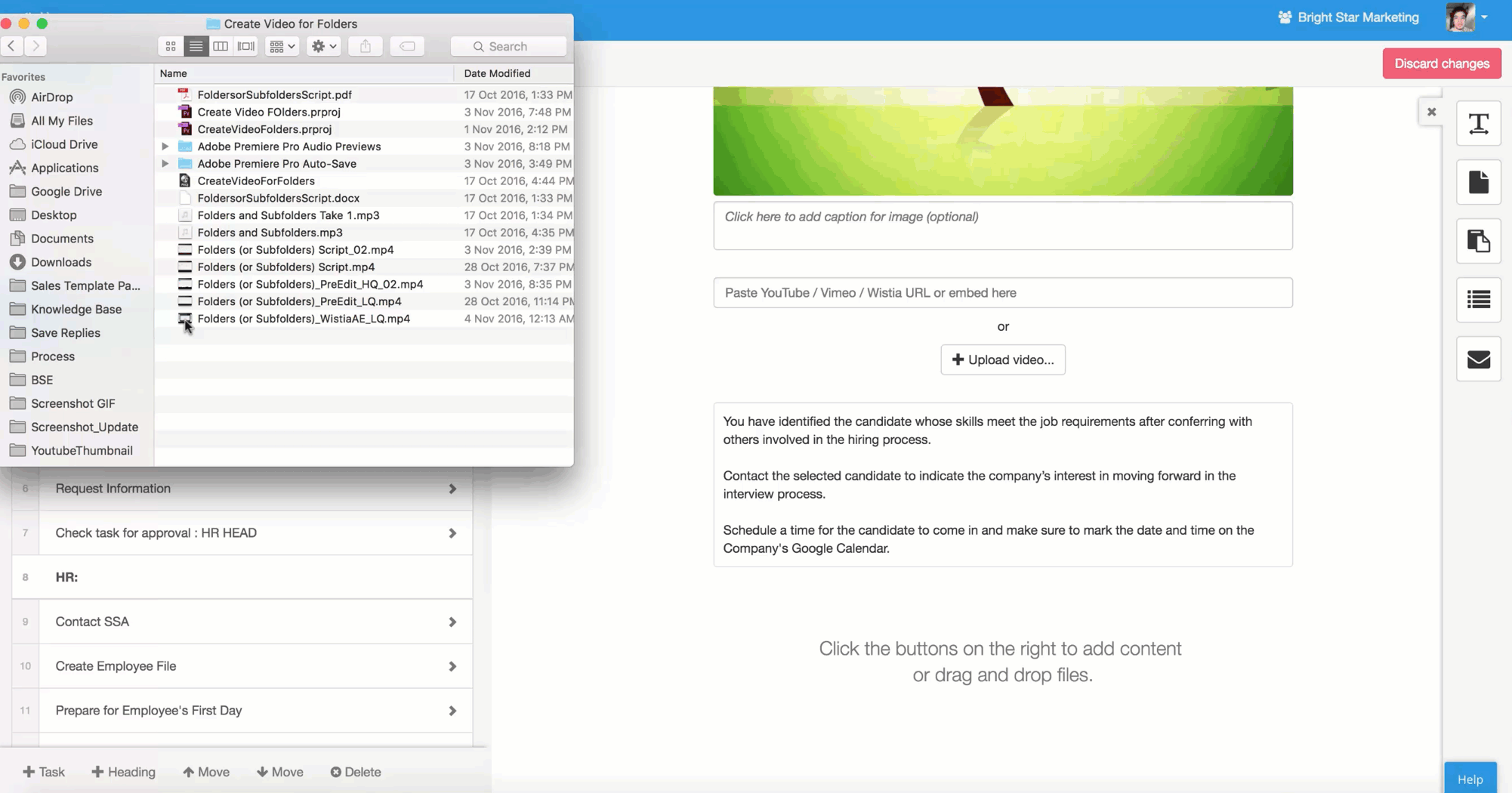
Alternatively, if you aren’t using Process Street, you can upload the video to a service like Google Drive and send the VA the link, like this:
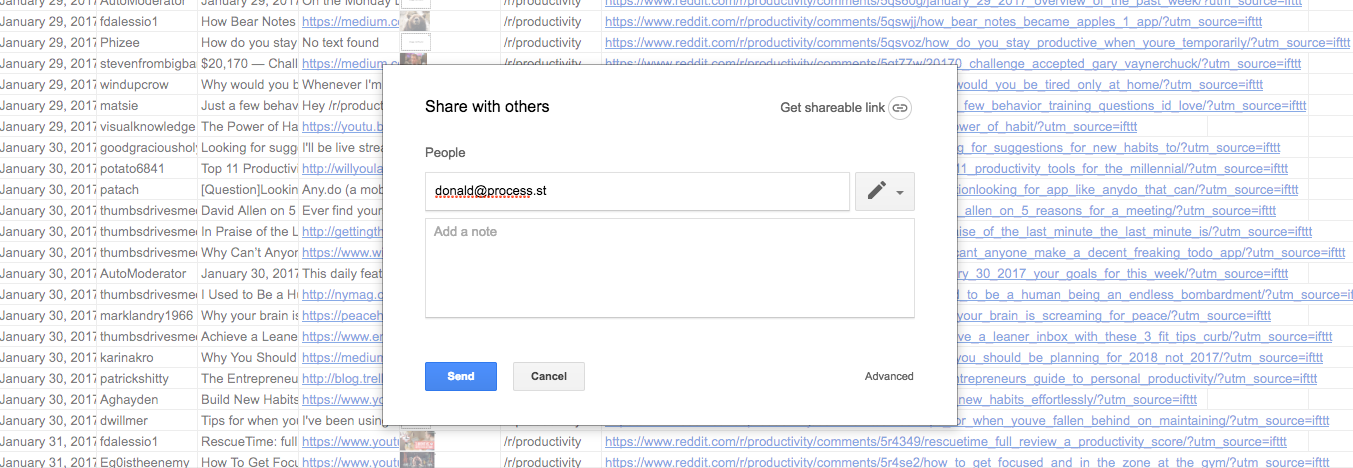
For further reading material on creating great processes, here’s a list of resources:
- What is a Process? A Non-Boring Guide for Regular People
- How to Create a Process People Won’t Hate Using
- How to Write Processes for Human Beings
- Why You Need to Document Business Processes
- The Process for Optimizing a Process
- Why You Need to Create a Process for Everything You Do More than Twice
- How to Build a Minimum Viable Process Pack for Your Startup
How to track the onboarding process
Once you have processes in place, it takes a lot of stress away from you and your team and helps to smooth the onboarding and training process. Drawing from our previous research on employee onboarding, here are the facts:
- Onboarding programs can increase retention by 25% and improve employee performance by 11%.
- Employees who participate in a structured onboarding program are 69% more likely to stay with an organization for 3 years.
- It takes 8-12 months for new hires to be as proficient as their tenured colleagues.
- 15% of employees said the lack of an effective onboarding program aided in their decision to quit.
You know the importance of onboarding. And so, you need to track and implement an onboarding process to ensure training (and everything else I’ve discussed so far) is both foolproof and scalable. That means you can hire as many VAs as you need with the same amount of minimal effort and margin for error.
Here are the two exact processes we use to onboard VAs. One for the manager to use, and one to assign to the VA:
Virtual assistant onboarding (to be used by the manager):
Virtual assistant onboarding (to be used by the VA)
What happens after onboarding?
At Process Street, we consider the actual onboarding process over one month after the one-week trial ends (e.g. 5 weeks after hiring). It’s important not to get complacent, though. Employees will slack off if they’re mismanaged.
Even though onboarding technically is over when the VA has productively settled into their regular tasks and doesn’t need your direct approval everything they do, it’d be a mistake to assume that silence = no problems.
Take time to schedule regular meetings so they can come to you with issues. Recently, Adam wrote up a great post on running effective meetings.
To answer the question, what happens after onboarding is that work continues as normal. Your new VA should be just as efficient as the rest of your team, and report to their manager as usual. Make sure you have a good reporting system in place (over meetings, or just sending written reports over Slack), and you can officially consider onboarding finished.
I hope this post has been a useful resource for you while onboarding a new VA! Any questions? Let me know in the comments.







 Workflows
Workflows Projects
Projects Data Sets
Data Sets Forms
Forms Pages
Pages Automations
Automations Analytics
Analytics Apps
Apps Integrations
Integrations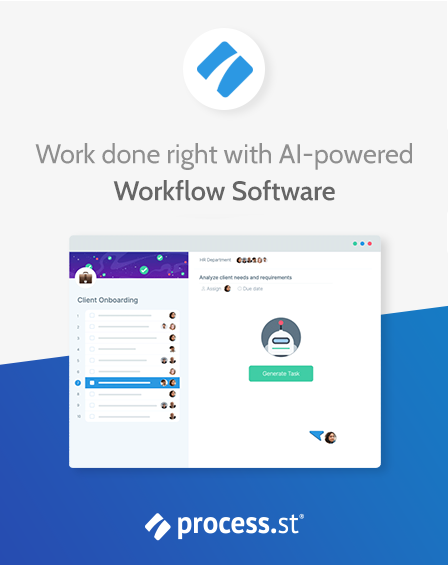
 Property management
Property management
 Human resources
Human resources
 Customer management
Customer management
 Information technology
Information technology



Benjamin Brandall
Benjamin Brandall is a content marketer at Process Street.